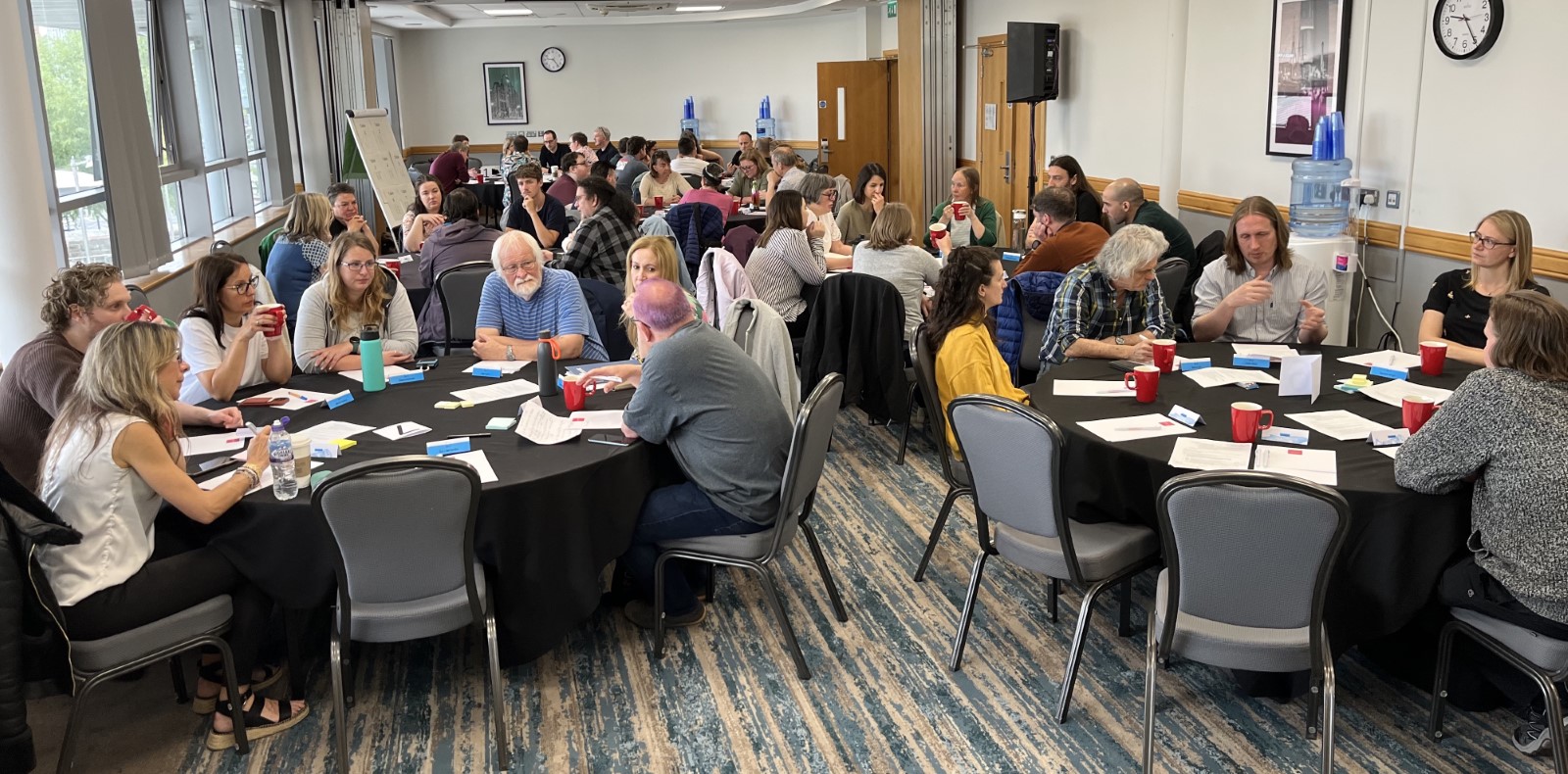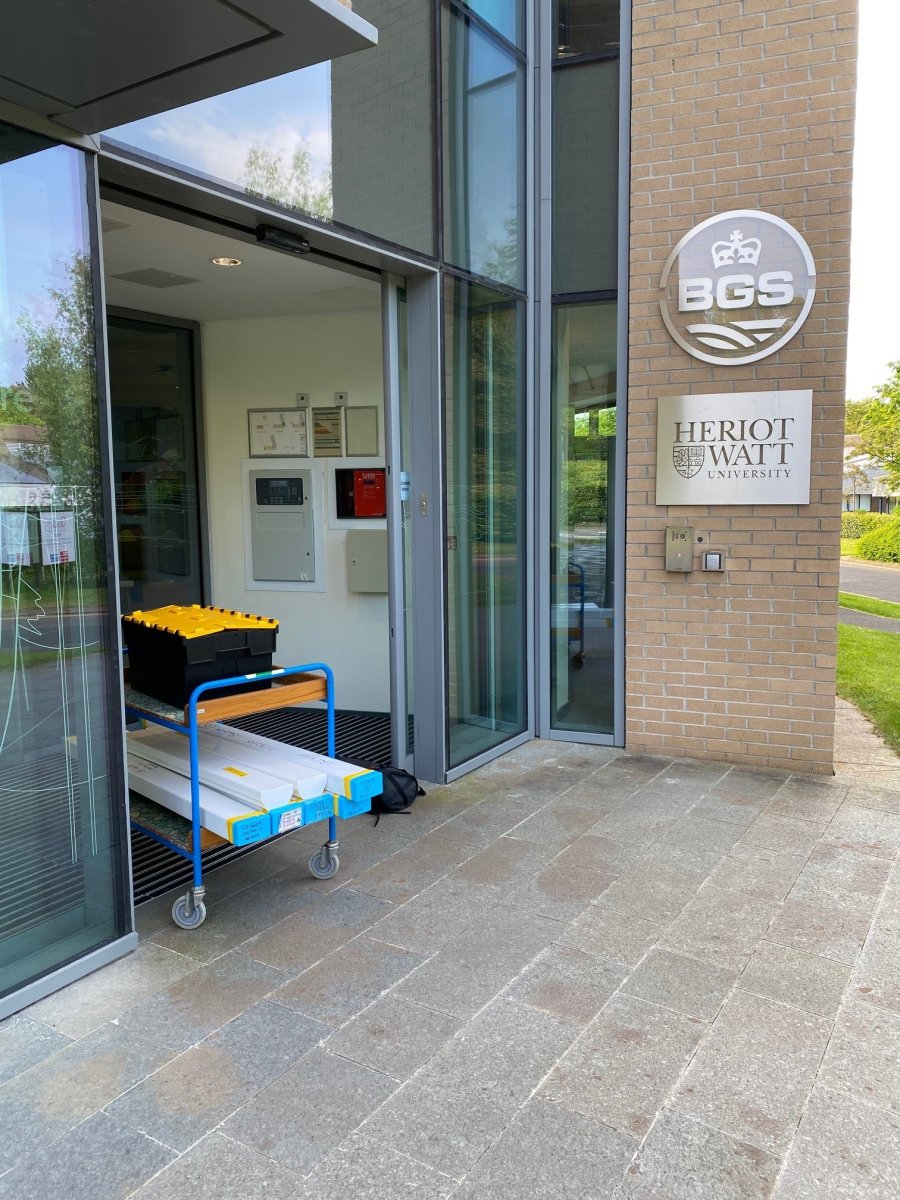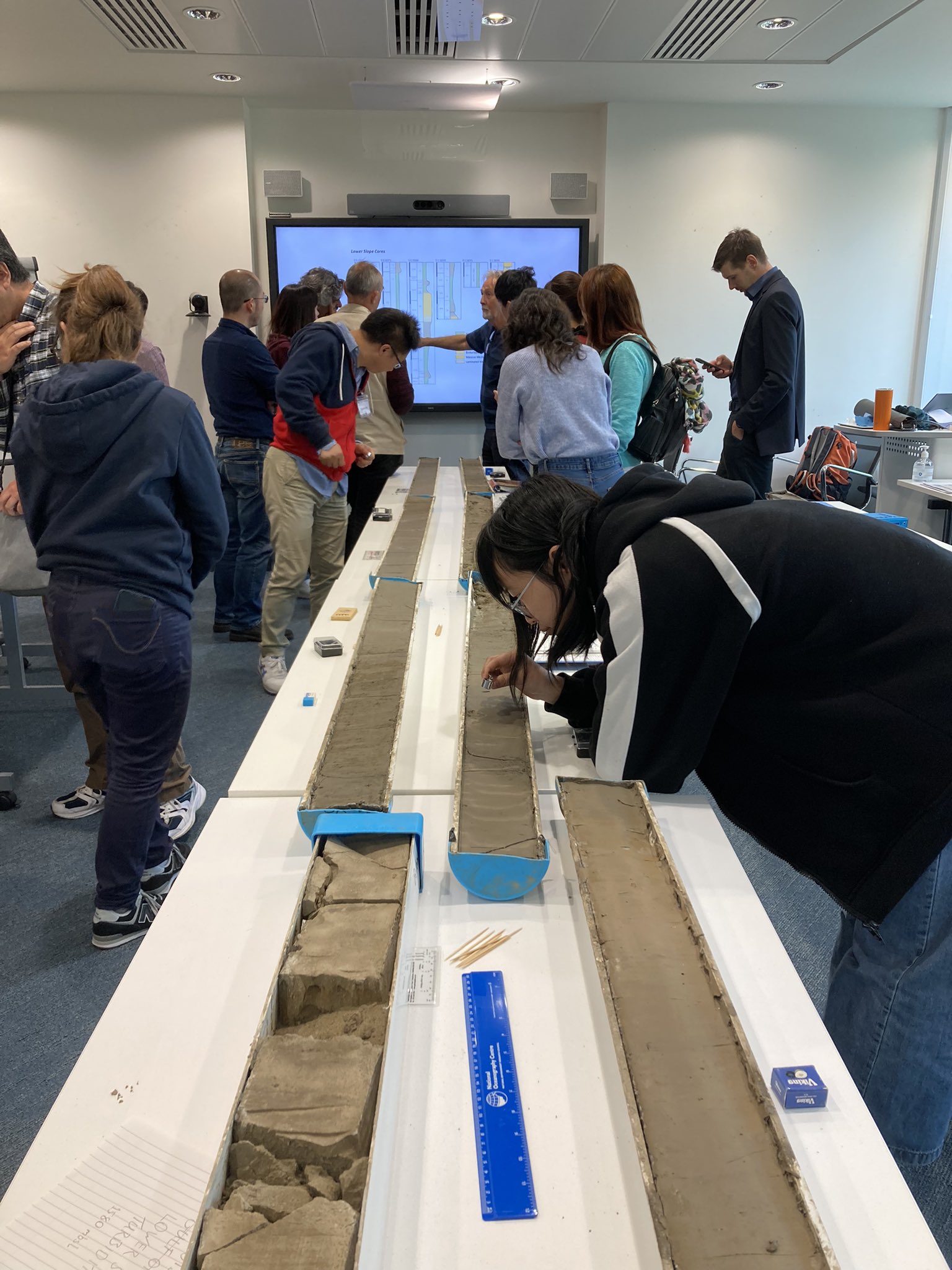BOSCORF goes on tour! Attending the Digital Ocean AwayDay at NOC, Liverpool, meeting friends and colleagues (old & new) at SUERC, East Kilbride, and running a sediment core workshop at the 4th Deepwater Circulation Research Conference in Edinburgh. All in one week!
The week began on Monday with us loading up samples from Madeira, Greenland and the Gulf of Cadiz from our facility at NOC, Southampton. A five hour drive found us arriving just in time for the kick off of the first ever Digital Ocean AwayDay hosted by NOC, Liverpool.
 Van loaded with our best examples of deepwater sediment cores
Van loaded with our best examples of deepwater sediment cores
Digital Ocean Away Day, National Oceanography Centre, Liverpool (May 22nd-23rd)
With 63 attendees from the Digital Ocean and other NOC groups, the event was a great opportunity to meet colleagues in person, have some fun and spark lively discussions on all things data.
The event was hosted by Dr Jon Blower and organised by Hannah Fray. The pair kicked off the day with a series of games to break the ice. The activities were fun and engaging and ultimately allowed us to share how our jobs contribute to NOC and society as a whole. The "draw what you do" activity was particularly useful as it simplified the amazing role Digital Ocean data managers and developers in Digital Ocean play in the community.
The two, half-day sessions focussed on brain-storming a collection of ideas for new projects and initiatives (often with comically large pens and sheets of paper). The projects were then refined in small-group, round table discussions. Participants were periodically shuffled between tables to generate new ideas for specific projects and meet members of the group. Ideas formulated ranged from AI dataset search engines and data quality assessment and control to fostering more collaboration across NOC groups. BOSCORF attendees thoroughly enjoyed the event and we came away having learned so much about our colleagues in Digital Ocean and the work they do. Thanks to Jon and Hannah for organising the event, we look forward to developing some of the ideas we generated over the coming months.

Scottish Universities Environmental Research Centre, East Kilbride (May 24th-25th)
Leaving Liverpool behind, we headed north to Scotland. We arrived at the Scottish Universities Environmental Research Centre (SUERC) in East Kilbride. The centre specialises in geochemistry, radiochemistry and biogeosciences. The facility has an extraordinary amount of specialist equipment that offer a full suite of geochemical techniques. The techniques each have their own dedicated laboratory space and technicians. Former BOSCORF Deputy Curator and current National Environmental Isotope Facility (NEIF) Engagement Officer, Dr Millie Bompard was our guide for the day, and she introduced us to the staff responsible for each lab.
The first and by far the largest lab we visited was the Accelerator Mass Spectrometry (AMS) laboratory, where we met Dr Derek Fabel. Derek is manager of the AMS and Cosmogenic labs. The lab is equipped with two NEC accelerator mass spectrometers and three sputter ion sources. The lab has the capability of measuring 10Be, 14C, 26Al, 36Cl, 41Ca and 129I radionuclides. Derek took us through the sample preparation, operation of the instruments and data processing.
After the AMS Laboratory we toured the SUERC Radioarbon Laboratory where SUERC staff explained the steps involved in sample selection, sample pretreatment and graphite target preparation for loading into the accellator mass spectrometers onsite. The lab deals with samples ranging from bones for archaeological and forensic studies to the surface environment and biofuels.
SUERC also hosts a range of National Environmental Isotope Facility (NEIF) Labs, including the Argon Isotope Laboratory. Dr Dan Barford, the manager of the lab, gave us a tour of the lab instrumentation and capabilities. The lab has a range of mass spectrometers, with a focus on K-Ar and Ar/Ar geochronology. One of the interesting research areas this technique is involved with is understanding the timescales of events surrounding the K-Pg boundary and the Chicxulub Impact.
Thanks to Millie and Prof. Darren Mark for hosting us at SUERC. We look forward to building closer ties between our facilities and developing the online learning platform GAEA
 Dr Derek Fabel shows us how the gas ionisation detector counts the rare isotopes and calculates the fraction of rare isotopes in each sample.
Dr Derek Fabel shows us how the gas ionisation detector counts the rare isotopes and calculates the fraction of rare isotopes in each sample.
The 4th Deepwater Circulation Research Conference, The Lyell Centre, Edinburgh
Our trip concluded at The Lyell Centre, where BGS hosted a deepwater sediment core workshop delivered by BOSCORF for the 4th Deepwater Circulation Research Conference. Organisers Dr Zeinab Smillie and Prof Dorrik Stow put on a fantastic day of joint sessions and workshops all things deepwater. It was a great opportunity to see how much this small community has developed since the last conference. Having the experts and early career scientists "get their eye in" to some of BOSCORF's most cryptic and beautiful deepwater sediment cores and smear slides from Madeira, Gulf of Cadiz and the Vesteris Seamount was an absolute pleasure. It is great to leave these workshops with questions answered, but even better to have more questions by the end of the day! We are delighted to have made new contacts on this visit, and we are looking forward to assisting this blossoming research community with their future endeavors in the deep!
 The cores arrive at The Lyell Centre, Edinburgh for the 4DWC workshop
The cores arrive at The Lyell Centre, Edinburgh for the 4DWC workshop
 Deputy Curator attempts to remember his deepwater sedimentology 101 classes on the Madeira turbidites
Deputy Curator attempts to remember his deepwater sedimentology 101 classes on the Madeira turbidites

